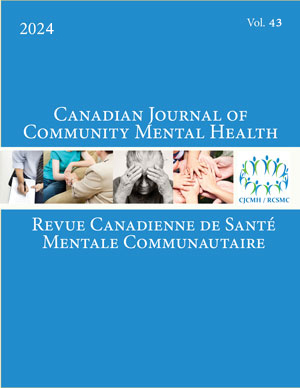Volume 43 • Number 2 • June 2024
Articles
The journey of obtaining a diagnosis and treatment for children and youth with ADHD can be challenging for all those involved. Focus groups were conducted with parents (n = 21), educators (n = 76), and healthcare providers (n = 39) to gather information regarding perceptions of this journey, especially as it relates to treatment utilization and adherence. Three cross-cutting categories emerged: the impact of socio-economic variables, the lack of integrated and continuity of care for ADHD, and the stigma surrounding ADHD and treatments. The results help to determine what is needed to support families to facilitate successful treatment for their child with ADHD.
This study explored the mental health experiences of sexual and gender diverse (SGD) communities in Canada within the context of the Covid-19 pandemic. Three online focus groups with 14 SGD community members were conducted to discuss experiences with social determinants of mental health. Themes included social connection and support, healthcare access and utilization, discrimination and socioeconomic status (employment, income, housing, education). Social connection and support were prominent themes throughout all groups. Policy and practice should focus primarily on scaling community-led services and programs that build social connection and support informed by local context and perspectives.
The Covid-19 pandemic presented numerous challenges and changes for all frontline providers, but the impacts on care staff in community service agencies is less understood. The current study involving secondary data analysis explored how frontline care staff with a fetal alcohol spectrum disorder (FASD) program describe their work during the public health restrictions. Semi-structured focus groups were conducted with frontline care staff (N = 20). Inductive thematic analysis resulted in three themes: shifting procedures, adapting interactions, and declining motivation. Changes in work because of Covid-19 and feelings in response to those changes shed light on the as yet unknown cost of the pandemic on these services and the FASD community.
Plusieurs pays ont mis en place des technologies numériques pour mieux prévenir les suicides. Le Québec accusait un certain retard sur ce plan. En mai 2017, l’Association québécoise de prévention du suicide (AQPS) a été mandatée par le ministère de la Santé et des Services sociaux (MSSS) du Québec pour élaborer une Stratégie numérique en prévention du suicide. Cet article vise à décrire les perceptions des personnes utilisatrices de Suicide.ca et de l’application Mes outils. Un devis mixte et convergent a été privilégié incluant des entrevues individuelles auprès de personnes usagères de services (N = 33) et un sondage auprès de personnes intervenantes (N = 477). Les résultats mettent en lumière leurs perceptions positives et des pistes de rehaussement.
Growing research has sought to understand non-suicidal self-injury (NSSI) stigma. To build on this literature, we qualitatively explored what young adults with lived experience of NSSI believed contributed to its stigmatization. Participants (n = 97) were asked open-ended online questions about what they perceived as contributing to NSSI stigma, which were then analysed via reflexive thematic analysis. Resultant themes indicated that participants believe stigma stems from people, who do not self-injure, misunderstanding self-injury as attention-seeking or conflate it with suicide; they also believe that the media may play a role in this regard (e.g., glamourization, inaccurate portrayals of recovery). Findings offer initial support for a recent theoretical framework for NSSI stigma and point to several implications, which are discussed.
Practice Innovations
Frequent emergency department users with mental illness or addiction often struggle to find the services they need. A pre-test/post-test design assessed outcomes for these individuals after participating in a novel community-based stepped-care program delivering individualized intensive case management services. Results indicated improvement in overall functioning and severity of anxious and depressive symptoms.
The path to long-term care (LTC) may be challenging, especially when transferring from inpatient mental health care. Here, eligibility and placement determinations may not fit within typical decision trees. This article outlines a process to visualize individual barriers to LTC placement. These visualizations facilitate discussion and planning to reduce client-specific barriers.









